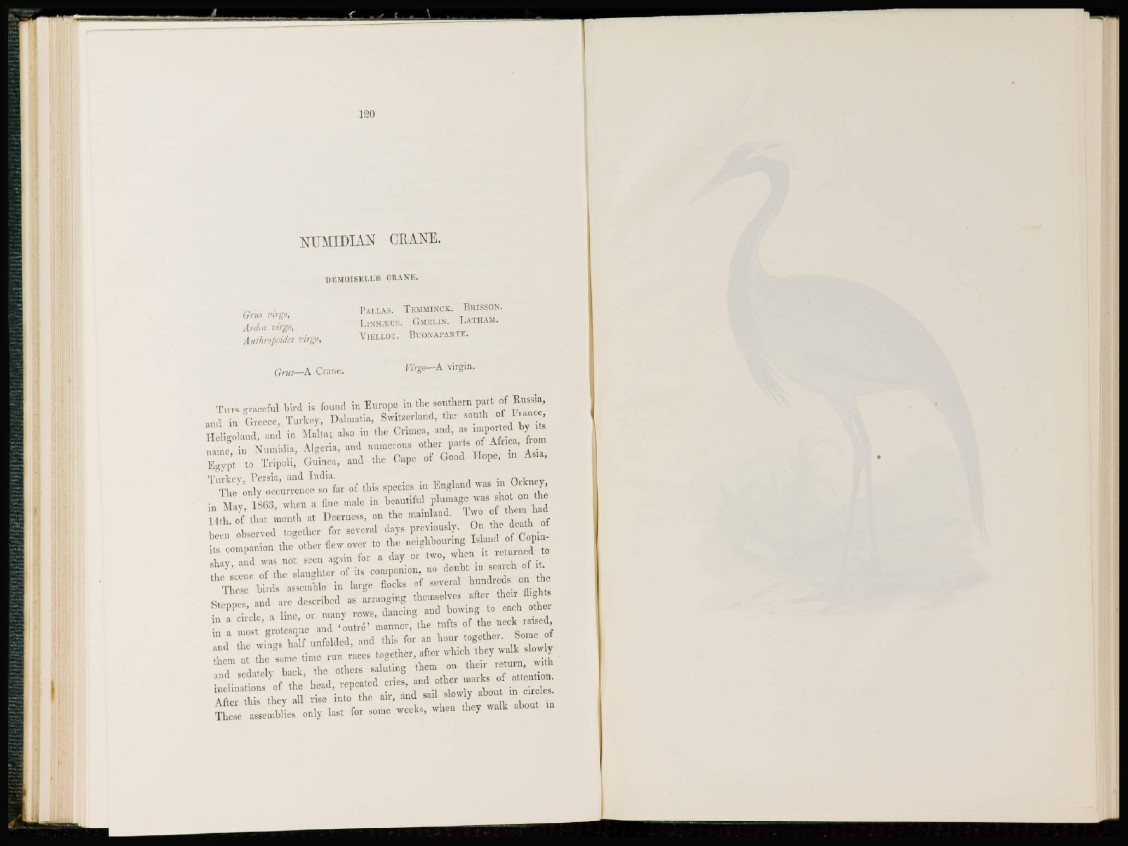
NUMTDLOr CEANE.
DEMOISELLE CRANK.
Grus m'rgo, PALLAS. TEMMINCK. BRISSON.
Ardta virgo, LINN.-KUS. GUBUN. LATHAM.
Anthropoides vt'rgo, YIELLOT. BUOMAPARTE.
Grus—A Crane, Virgo—A virgin.
T i n s graceful bird is found in Europe in the southern part of Russia,
and in Greece, Turkey, Dalmatia, Switzerland, the south of France,
Heligoland, and in Malta; also in the Crimea, and, as imported by its
name, in \ u m i d i a , Algeria, and numerous other parts of Africa, from
Egypt to Tripoli, Guinea, and the Cape of Good Hope, in Asia,
Turkey, Persia, and India.
The only occurrence so far of this species in England was in Orkney,
in May, 1803, when a fine male in beautiful plumage was shot on t he
1 Ith. of that month at Deerness, on the mainland. Two of them had
been observed together for several days previously. On the death of
its companion the other flew over to the neighbouring Island of Copinshav,
and was not seen again for a day or two, when it returned to
the scene of the slaughter of its companion, no doubt in search of it.
These birds assemble in large flocks of several hundreds on the
Steppes, and are described as arranging themselves after their flights
in a circle, a line, or many rows, dancing and bowing to each other
in a most grotesque and ' o u t r e ' manner, the tufts of the neck raised,
and the wings half unfolded, and this for an hour together. Some of
them at the same time run races together, after which they walk slowly
and sedately back, the others saluting them on their return, with
inclinations of the head, repeated cries, and other marks of attention.
After this they all rise into the air, and sail slowly about in circles.
These assemblies only last for some weeks, when they walk about in